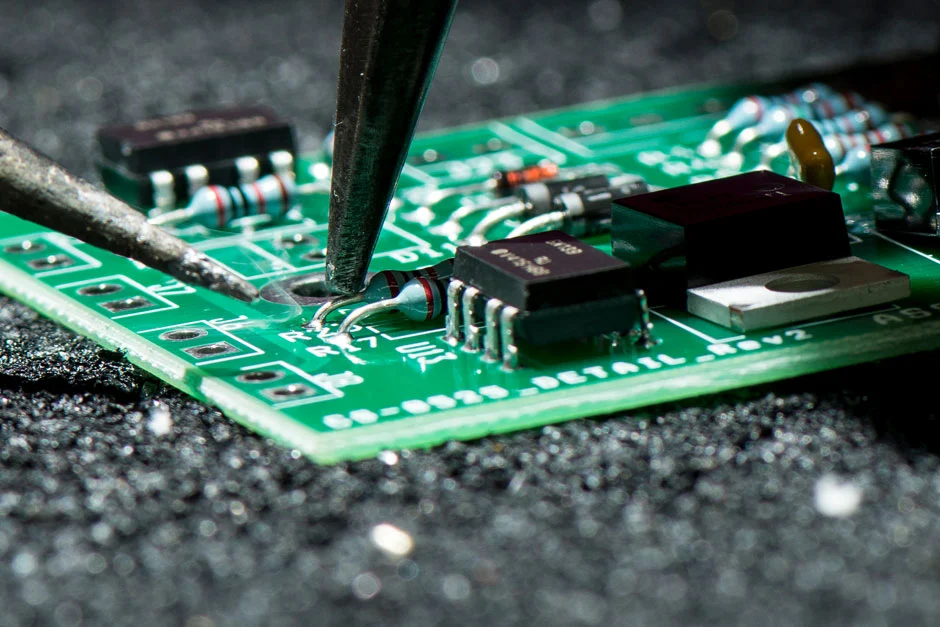The Advantages of Designing Your Own PCBs: From Cost Savings to Customization’

Designing your own printed circuit boards (PCBs) may sound like an intimidating process, but there are several benefits that make it worthwhile. Most electronic devices are built around printed circuit boards (PCBs), which offer a dependable and effective way to connect parts and build circuits. While pre-made PCBs are widely available, there are several benefits to designing your own PCBs, including cost savings, customization, and enhanced performance. We’ll go over these benefits in greater detail in this post and show why building your own PCBs might be a wise move for any electronics project.
Cost Savings
Saving money is one of the biggest benefits of designing your own PCBs. Making your own PCBs can cost less, despite the initial investment in design software and tools. However, having to purchase features or components you don’t need can increase the cost of your project. In addition, off-the-shelf PCBs could also need to be modified or added to fit your project, increasing the final cost.
By creating your own PCBs, you have total creative flexibility and you can just select the components your project requires. This can save much money, particularly on larger projects where numerous PCBs are needed. Also, creating your own PCBs using software from Altium enables you to develop more effective circuit layouts, which can reduce energy usage and overall expenses.
Higher Degree of Customization
Customization is a significant benefit of creating your own PCBs. Standard sizes and designs of off-the-shelf PCBs might not be appropriate for your project. By creating your own PCB, you can construct a unique solution that precisely satisfies your requirements because you have total control over the board’s size, shape, and layout.
Customization is crucial for applications requiring unconventional component placements or particular circuit architectures. By creating your own PCBs, you can customize the board to meet your unique needs and ensure that the circuit functions as intended. Moreover, custom PCBs can fit inside respective housings or enclosures, enhancing the finished product’s overall look.
Enhanced Performance
Bespoke PCBs may perform better than off-the-shelf alternatives. This is because you have control over the circuitry architecture when creating your own PCB, which can affect the device’s speed, effectiveness, and dependability. In addition, the circuit layout can be improved to minimize noise, increase signal integrity, and reduce interference, all of which can enhance performance.
Moreover, custom PCBs enable more effective power management algorithms, which can lengthen your device’s battery life. It’s feasible to cut down on energy use and ensure that the gadget runs for as long as possible on a single charge by designing the board with power efficiency in mind. This is especially crucial for portable devices like smartphones, tablets, and wearables.
Faster Prototyping and Testing
Making your own PCBs helps speed up the prototype process. Using off-the-shelf PCBs may mean you need to tweak the board or add extra components to get it to function as intended in your project. Making your own PCBs allows you to make a board uniquely suited to your idea, speeding up the prototyping procedure.
Bespoke PCBs can also aid in the early discovery and correction of any design defects, ultimately saving time and money. Before moving on with mass production, you can confirm that the circuit functions as intended by testing it on a bespoke PCB.
Increased Flexibility
Custom PCBs are more flexible than pre-made alternatives. With off-the-shelf PCBs, your options are constrained by the existing designs. If you need a specific layout or feature that isn’t offered by standard PCBs, you can create this on a custom PCB and tailor your layout and functionality to your requirements.
Moreover, bespoke PCBs provide you with more component customization options. Custom PCBs can accommodate a greater variety of components, whereas off-the-shelf PCBs are made to work with specific features. When working with older or obscure elements that might not be easily accessible in current off-the-shelf PCBs, this can be pretty helpful.
Another benefit of designing your own PCB is scaling your project more efficiently. You can quickly and effectively build several boards with custom PCBs since they are engineered to scale. This can be helpful if you intend to mass-produce your product eventually.
Conclusion
There are many benefits to designing your own printed circuit boards, including cost savings, customization, and enhanced performance. While initially appearing overwhelming, creating your own PCB may be quite simple if you have the correct software and equipment. In addition, you can develop a more effective, inventive, and efficient electronic device by making your own bespoke PCBs since you have total control over the design.
Creating your own PCBs can assist you in reaching your objectives and putting your ideas into action, whether you are a hobbyist, maker, or professional electronics designer. Bespoke PCBs can save you money, help you develop a one-of-a-kind solution that addresses your particular needs, enhance the performance of your device, hasten the prototype process, and provide you with more design options.
Thus, think about developing your own PCBs if you want to advance your electronic projects. You can open up a world of opportunities and design electronic gadgets customized to your unique needs with the correct tools and resources.
